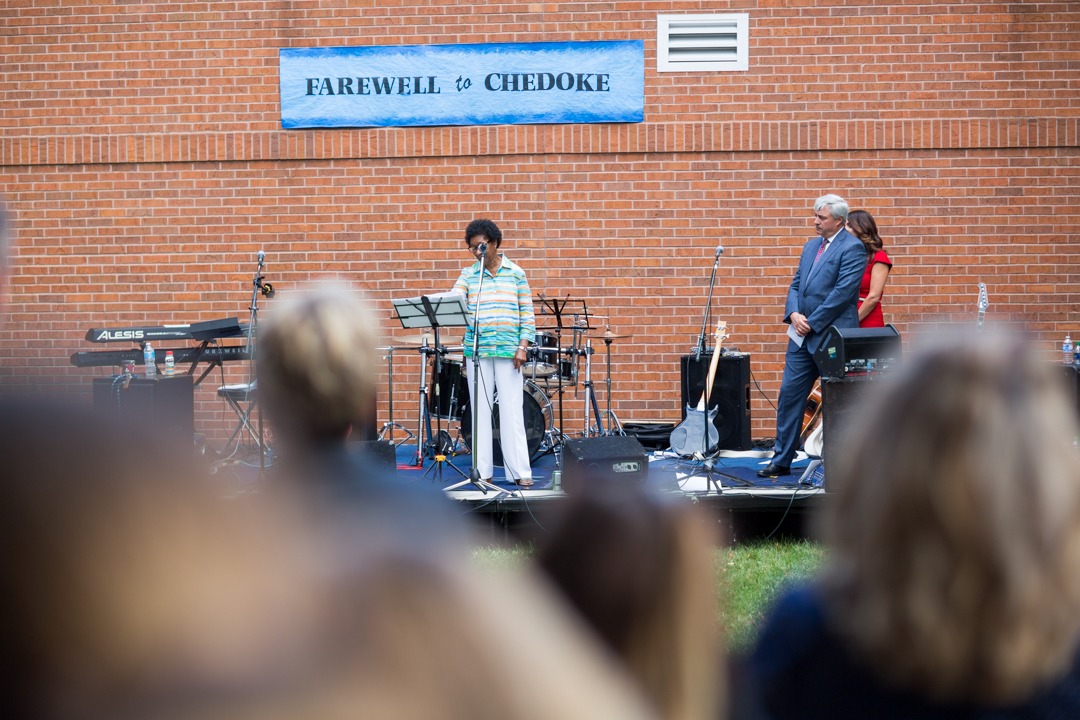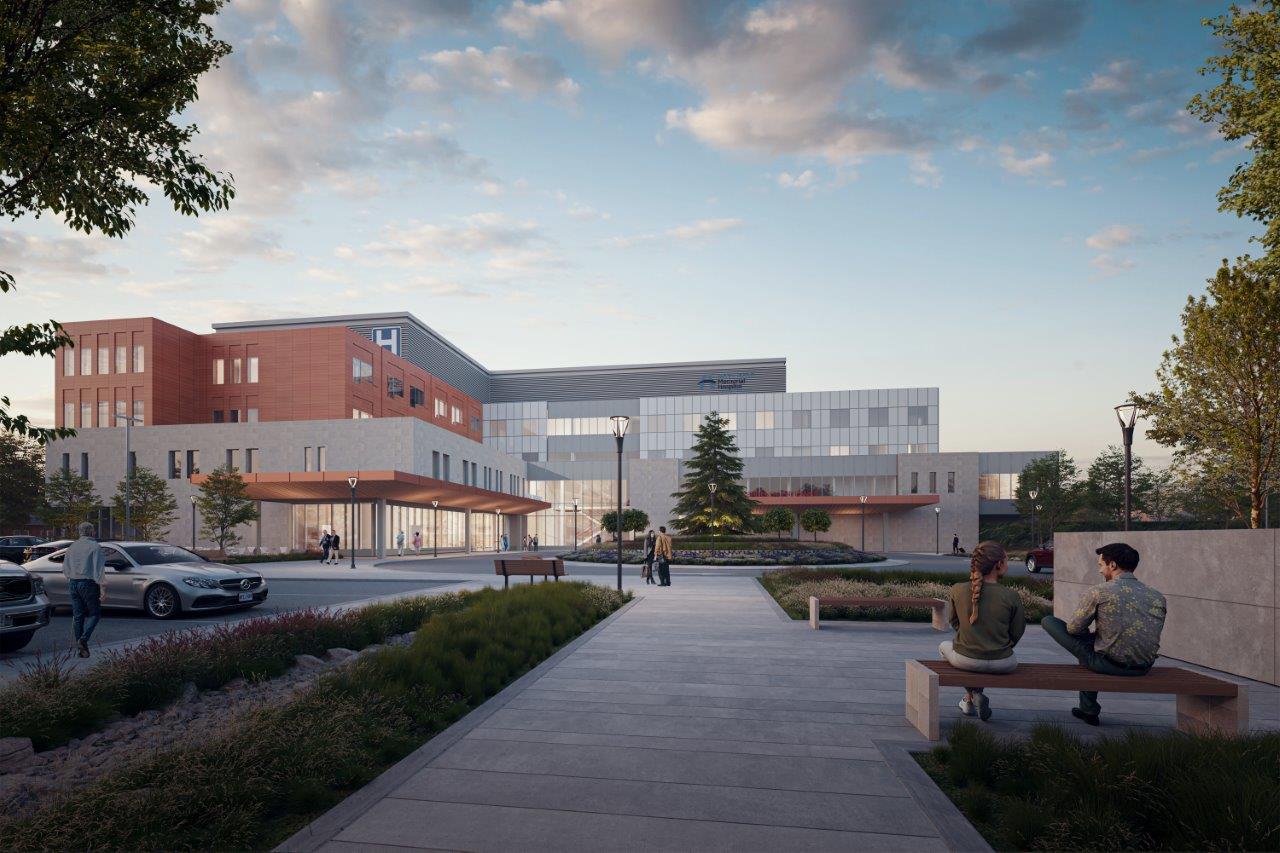
Happy anniversary to…us! Hamilton Health Sciences turns 25
Pop the champagne, we have something to celebrate.
November 28 is the birth date of Hamilton Health Sciences (HHS).
How did we get to be a community of 15,000 staff, physicians, researchers and volunteers? The only hospital in Ontario that cares for all ages, from pre-birth to end of life? A world-renowned hospital for healthcare research? The largest employer in the Greater Hamilton region?

Rob MacIsaac
“The evolution of Hamilton Health Sciences has been a remarkable journey,” says HHS CEO Rob MacIsaac. “We have achieved so much in the last 25 years. Countless people in the Hamilton community have either contributed to our success, or have been positively affected by our organization. We have a lot to be proud of, and so does our city.”
Let us tell you about it over some cake.
A very special day
On November 28, 1996, the Ontario Ministry of Consumer and Commercial Relations approved the Letters Patent of the Hamilton Health Sciences Corporation (HHSC). The patent was the last stage in the approvals process for the merger of four hospitals (Henderson, Chedoke, McMaster and Hamilton General), which had operated under two separate corporations: Hamilton Civic Hospitals and Chedoke-McMaster Hospitals.
“The hospitals face a number of common challenges and will be better placed to address these as a single organizational entity,” reads the proposed merger report published in June 1996. “In summary, the Transition Committee believes that the merger presents a unique opportunity to create a world class Academic Health Science Centre that would be a centre of excellence in relation to patient care, education and research and management.”
In 2003, Juravinski Cancer Centre joined HHS, followed by St. Peter’s Hospital in 2008. In 2010, Henderson General Hospital was renamed Juravinski Hospital, and in 2014, West Lincoln Memorial Hospital joined the club.
But the hospital’s history dates back to the 1800s when Hamilton General Hospital opened in a little house in Hamilton. Take a read through our history.

Sharon Pierson
“What we’re celebrating on November 28, 2021 is 25 years of caring for our community and setting a standard of excellence in healthcare we can all be proud of,” says HHS executive vice president of clinical operations and chief operating officer, Sharon Pierson. “Merging our hospitals has served our community well, allowing us to provide a continuity of care from birth to end of life, along with enhanced education and research, and strong leadership in the healthcare system. We’re excited for what the future holds.”
A reason to celebrate
The amalgamation of hospitals in 1996 has allowed HHS to produce the kind of large and efficient organization originally envisioned, says Dave McCaig, executive vice president of corporate affairs and chief financial officer.

Dave McCaig
“Together, we are able to better use our resources, simplify our decision making, strengthen relationships with partners, improve the effectiveness and efficiency of our operations, and ultimately, provide better care for our patients and community,” he says.
“We know we are better and stronger together, sharing services such as finance, human resources, decision support, information technologies, and more. We’re an organization with the skills, knowledge and talent to continue to lead and innovate in healthcare as it evolves to the future we create together,” says McCaig.
Twenty-five years later, the COVID-19 pandemic has shown us how strong we really are and what we’re capable of when we work as a team.
Bold vision for the years ahead
Five years ago, after intense community engagement, HHS unveiled a strategic plan for the care the hospital will provide in the coming decades, and the facilities it will need to deliver it. It includes rebuilding the aging West Lincoln Memorial Hospital, which is now just months away from getting shovels into the ground, as well as the redevelopment of three century-old wings at the Juravinski Hospital and Cancer Centre (approval to start the JHCC planning process is expected by the end of 2021).
HHS has a bold vision for the future – and we’re planning full steam ahead.
25 years of providing care at HHS

Susan Campbell
Occupational and physiotherapy assistant Susan Campbell started at Chedoke Hospital in 1996 and then moved to the former Henderson Hospital — now Juravinski Hospital – and has been there ever since.
She was 22 years old and attending night school to earn her occupational therapy assistant/physical therapy assistant certificate as part of the first graduating class at Mohawk College (previously, therapy assistants were trained on the job).
“We worked during the day and went to school at night,” she remembers. “In those days, we had a physio department and we managed equipment, including wheelchairs, for the whole hospital.”
Now, occupational and physiotherapist assistants work with a specific program (for example, orthopaedics) instead of all different areas.
“Working as part of a therapy team, our goal is almost always to improve strength, mobility and function. When you are working with a patient who is a bit slower to progress and has overcome hurdles, it is very rewarding when they start to make good functional gains and you see them discharged home or to a rehab setting,” she says.
“Some of my most memorable moments, however, are with patients who were palliative. It has been my privilege to be working closely with patients during their final days,” says Campbell. “My role with these patients is to help them improve their quality of life by providing range of motion exercises, re-positioning or often just providing a warm blanket and being a familiar face that they can talk to. People love to reflect on their lives and share their stories and these moments have been the ones that have really stayed with me.”
25 years of career growth at HHS

Amy Cranston
Clinical research associate Amy Cranston started at the site formerly known as Henderson Hospital in October 1996 as a file clerk in the Health Records department.
“I had been working in a fast food restaurant part-time while attending second year university full-time at McMaster so was thrilled to be hired in a hospital,” says Cranston.
She was offered more than double her restaurant wage.
“One night while working, a doctor came in asking if anyone in the office would be interested in doing a chart review for a research study he was conducting. I volunteered for the role in my spare time and really enjoyed it.”
From there, Cranston enrolled in a new clinical trial research coordinator certificate program, took some additional college medical courses and began a job in the Acquired Brain Injury Program for a research study in 1998. In 2001, she applied for a job as a Clinical Research Associate in Pediatric Oncology at McMaster Children’s Hospital. While in that position, she completed a McMaster/Mohawk CRA certification diploma program.
“In the past 25 years I have witnessed Chedoke/McMaster and Hamilton Civic Hospitals become HHS. It has been an exciting amalgamation and truly set Hamilton as a leader in specialties,” she says.
Cranston has worked to support kids, families and cancer research for twenty years.
“Speaking to parents on the absolute worst day of their life, discussing their child’s diagnosis and potential participation in a clinical trial for treatment can be very hard,” she says, “but there have been many times when a family feels supported and tells you they are relieved that the treatment is cutting edge and that the entire healthcare team is supporting them.”
“In the 1960s the survival rate for childhood leukemia was about 20 per cent. When I started in 2001 is was 70-80 per cent,” says Cranston. “Now, we are looking at a survival rate above 70 per cent for high-risk leukemia patients and above 90 per cent for standard risk leukemia patients. That is huge in 20 years. Our goal is 100 per cent survival and I like being part of a team invested in meeting it.”





